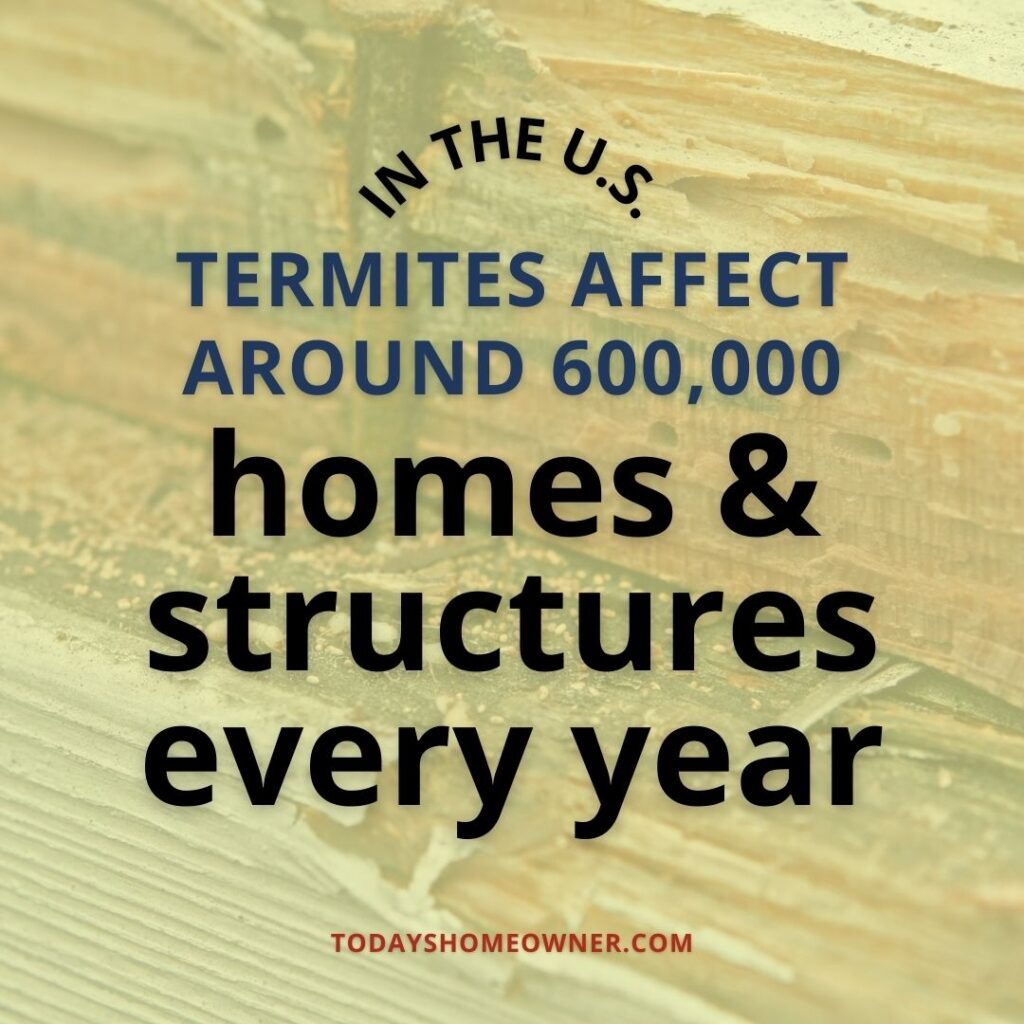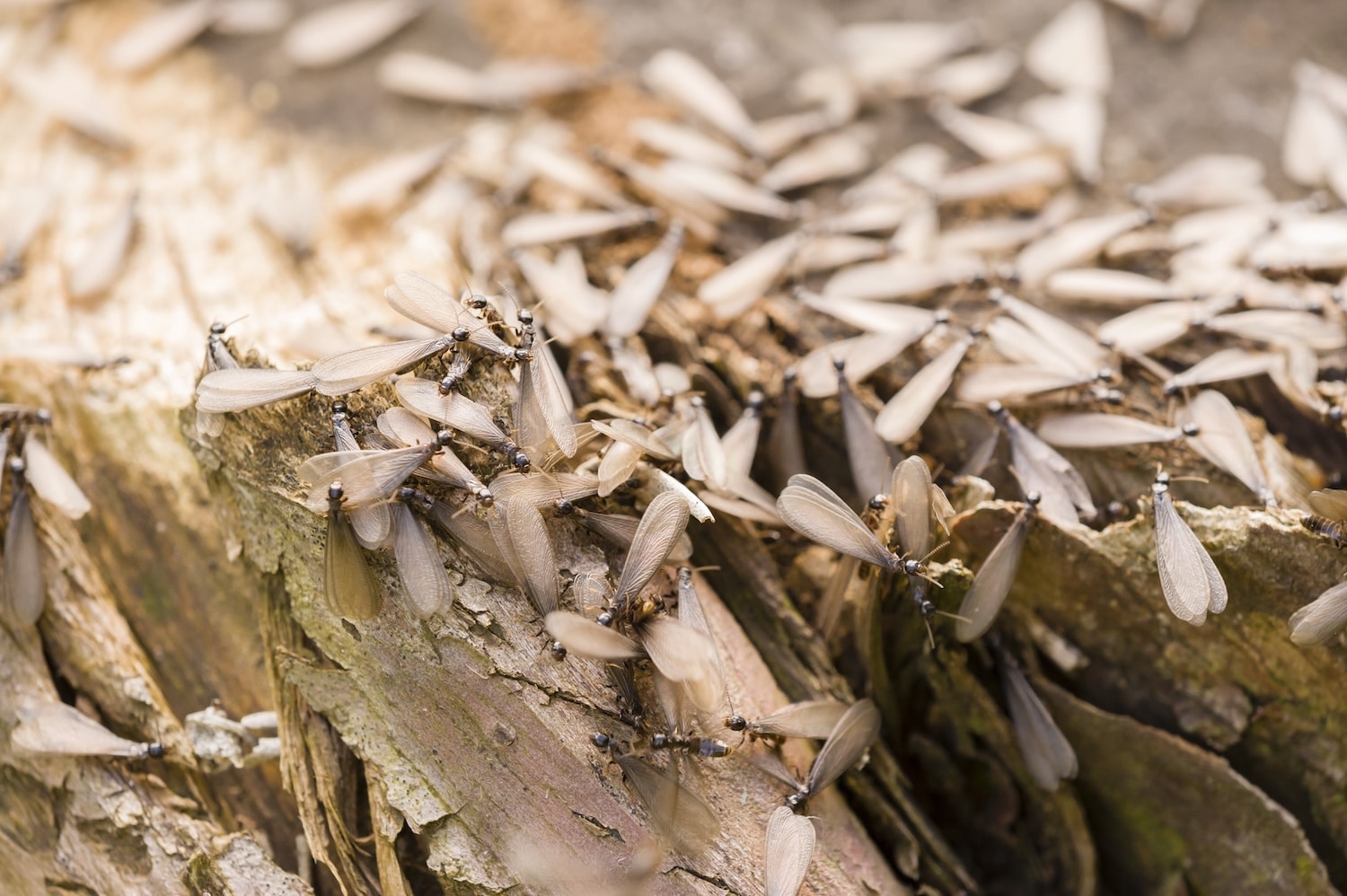Most termite problems start long before you see obvious wood damage. In fact, by the time you spot crumbling wood or warped floors, a colony may have been chewing away at your home for months—or even years.
That’s why it’s so important to catch the early warning signs of termite wood damage. If you know what to look for, you can stop termites in their tracks before they cause costly repairs.
Let’s walk through the small signs that often go unnoticed—and what to do if you find them.
Why Termites Are a Bigger Problem Than You Think
Termites might be tiny, but they’re not harmless. Each year, they cause over $5 billion in property damage in the U.S.—and most of that isn’t covered by homeowners insurance (source).
Unlike ants or roaches, termites stay hidden. They eat wood from the inside out, making it hard to spot the damage until it’s serious. That’s why early detection is key.
Think of termites like a silent leak. You don’t see the water at first, but over time, it can rot out your home’s structure.
What Termite Wood Damage Looks Like
So, what does termite wood damage look like? Here are a few common signs:
- Hollow-sounding wood: Knock on a wood surface, and if it sounds empty, termites may be to blame.
- Wavy or blistered wood grain: It may look like water damage, but termites can leave similar marks as they tunnel below the surface.
- Tunnels or grooves in wood: If you peel back a layer, you might find winding patterns where termites have chewed through.
Unlike water damage, termite damage is dry and often follows the grain of the wood. It’s more brittle and can break easily when tapped or pressed.
Signs That Often Get Missed
Some of the earliest termite warning signs don’t look like wood damage at all. Watch for these:
- Clicking or rustling sounds in your walls – Termites make noise when they’re disturbed or working.
- Bubbling paint or warped walls – This can happen when termites push moisture into surfaces.
- Mud tubes along your foundation or crawl space – These are like highways termites use to travel safely from the soil to your home.
- Discarded wings or droppings (frass) – After swarming, termites drop their wings near windows or doors. Their droppings look like tiny wood-colored pellets.
The problem? These clues are easy to overlook or confuse with other issues. That’s why it helps to know where to look next.
Where Termite Damage Usually Starts
Termites are drawn to moist, dark spaces—especially where wood touches soil. Common problem spots include:
- Crawl spaces
- Basement framing or support beams
- Wooden decks or porches
- Siding that touches the ground
- Around windows and door frames
If you see signs in these areas, termites may already be working behind the scenes.
Why DIY Inspections Usually Miss the Mark
Sure, you can look around your home for mud tubes or damaged wood. But even if everything looks fine on the surface, termites could still be active underneath.
Here’s the issue: termites don’t like light or open air. They stay tucked behind walls, under flooring, or inside framing—places the average homeowner doesn’t inspect regularly.
Without professional tools or training, it’s easy to miss the early signs or confuse them with other types of damage. And the longer you wait, the worse the damage gets.

Other Maintenance to Prevent Termites
Even if you don’t see any termite damage now, smart maintenance can help keep them away:
- Keep wood and mulch away from your home’s foundation
- Fix leaks and keep your crawl space dry
- Make sure gutters and downspouts direct water away from your home
- Use treated lumber for decks, porches, and fences
- Trim trees and shrubs so they don’t touch your siding or roof
And remember, even newer homes can get termites—especially in areas like [insert local region] where the soil is termite-friendly.
When to Call a Professional
If you’ve spotted any warning signs or just aren’t sure, it’s best to bring in a trained eye.
You should call a licensed inspector if:
- You notice signs like mud tubes, discarded wings, or hollow wood
- You’re buying or selling a home
- You’ve had moisture issues in the crawl space or basement
- It’s been a while since your last home or termite inspection
At PI Home Inspection Services, we offer thorough wood-destroying organism (WDO) inspections designed to uncover hidden termite activity. We know where to look—and what early damage really looks like.
Don’t Wait—Termites Won’t
Termite wood damage doesn’t get better with time. And while it might start small, it can weaken your home’s framing, floors, and walls fast.
Seeing signs of damage but unsure if termites are to blame? Let us help you find out. Schedule a WDO inspection with PI Home Inspections today, and get answers before termites take over.

